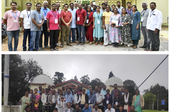 SCOPE SCOPE
SCOPE SCOPEIndian Institute of Astrophysics Training Workshop at Kodaikanal and Kavalur for Total Lunar Eclipse
A total lunar eclipse is to occur on the night of 7-8 September 2025, which will be visible from all over India. IIA therefore organised two “Train the Trainers” Workshops during 2-3 August 2025, one at the Vainu Bappu Observatory in Kavalur, and the other at the Kodaikanal Solar Observatory in Kodaikanal. These workshops were to train science and astronomy communicators and teachers in Tamil Nadu and Puducherry so that they can in turn organise preparatory workshops and eclipse viewing camps in their neighbourhoods.
Link to PIB article here.
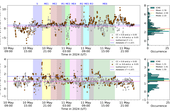 SCOPE SCOPE
SCOPE SCOPESolar blasts that lit up Ladakh Skies May last year uncoded
A new study by IIA astronomers has revealed crucial insights into how multiple successive solar blasts known as Coronal Mass Ejections (CMEs) have interacted with each other and evolved thermally en route from the Sun to Earth. This occurrence triggered the most intense space weather event in the last two decades, which was observed on 10th May 2024. These findings offer a major step forward for improving space weather forecasting models, particularly in predicting the impact of complex CME events on Earth's magnetosphere.
This is based on the paper titled "Evolution of the interacting coronal mass ejections that drove the great geomagnetic storm of 10 May 2024", by Soumyaranjan Khuntia, Wageesh Mishra, and Anjali Agarwal, 2025, Astronomy and Astrophysics, 698, A79.
Press release by PIB published here.
Press release issued by DST here.
Download the paper from here.
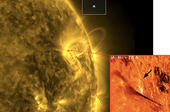 SCOPE SCOPE
SCOPE SCOPETiny loops in Solar Corona can unveil Sun's hidden explosive secrets
A new breakthrough from astronomers reveals a dazzling world of miniature plasma loops in the lower layers of the Sun's atmosphere. These are so small and short-lived, that they have stayed hidden until now. However, they hold clues to one of the Sun’s deepest mysteries --how it stores and unleashes magnetic energy.
This is based on the paper titled "Unveiling the Dynamics and Genesis of Small-scale Fine-structure Loops in the Lower Solar Atmosphere", by Annu Bura, Tanmoy Samanta, Alphonse C. Sterling, Yajie Chen, Jayant Joshi, Vasyl Yurchyshyn, and Ronald L. Moore, 2025, The Astrophysical Journal, 983, 144.
Press release by PIB published here.
Press release issued by DST here.
Download the paper from here.
 SCOPE SCOPE
SCOPE SCOPEIIA Bengaluru scientists discover a new kind of Stellar Chemistry
Far away in the Ophiuchus Constellation, a peculiar star named A980, 25800 light years away, is rewriting what we know about stellar chemistry. Researchers have uncovered a cosmic twist -- this mysterious star that belongs to a rare class called Extreme Helium (EHe) stars, carries surprisingly high amount of germanium—a metallic element never before observed in this type of star.
This is based on the paper titled "Detection of Enhanced Germanium in a New Cool Extreme Helium Star A980: Insights and Implications", by Ajay Kumar Saini and Gajendra Pandey, 2025, The Astrophysical Journal, 979, 239.
Press release by PIB published here.
Press release issued by DST here.
Download the paper from here or here.
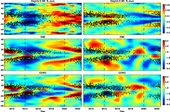 SCOPE SCOPE
SCOPE SCOPEScientists Chart the Sun's Subsurface Weather Patterns Tied to Its 11-Year Activity Cycle
An international team of solar physicists has unveiled new insights into the dynamic "inner weather" of the Sun—plasma currents just beneath its surface that pulse in step with its 11-year sunspot cycle. In a study published on the 22nd of April 2025, in the The Astrophysical Journal Letters, researchers from the Indian Institute of Astrophysics (IIA), Stanford University (USA), and the National Solar Observatory (NSO, USA) have traced how these hidden flows shift over time, potentially reshaping our understanding of how the Sun's interior connects to its outer magnetic behavior, which has far-reaching influence on space weather and Earth.
This is based on the paper titled "Solar Cycle Variations in Meridional Flows and Rotational Shear within the Sun's Near-surface Shear Layer", by Anisha Sen, S. P. Rajaguru, Abhinav Govindan Iyer, Ruizhu Chen, Junwei Zhao, and Shukur Kholikov, 2025, Astrophysical Journal Letters, 984, 1.
Press release by PIB published here.
Press release issued by DST here.
Download the paper from here.
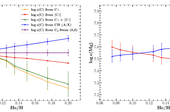 SCOPE SCOPE
SCOPE SCOPEA new method to reliably estimate Helium abundance in the Sun
Since Helium does not produce any observable spectral lines from the visible surface, or the photosphere, of the Sun, its abundance has usually been estimated through indirect means. In a recent study, the abundance of Helium in our Sun has been estimated accurately using the Magnesium and Carbon features in the observed high-resolution spectrum of the Sun.
This is based on the paper titled "Helium Abundance of the Sun: A Spectroscopic Analysis", by Satyajeet Moharana, B. P. Hema, and Gajendra Pandey, 2024, Astrophysical Journal, 974, 2.
Press release by PIB published here.
Press release issued by DST here.
Download the paper from here.
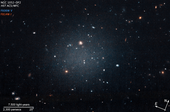 SCOPE SCOPE
SCOPE SCOPECurious case of missing dark matter in a distant galaxy
The galaxy NGC 1052-DF2 has remained a puzzle for astronomers, since modeling has shown that it is deficient in dark matter, which is in conflict with the standard galaxy formation and evolution models. A recent work from IIA shows that the estimation of the dark matter halo is critically dependent on the shape and structure of the dark matter halo and anisotropy of the stellar dispersion.
This is based on the paper titled "Challenges in modeling the dark matter halo of NGC 1052–DF2: Cored versus cuspy halo models", by K. Aditya, 2024, Astronomy and Astrophysics, Letters, 984, 1.
Press release issued by DST here.
Download the paper from here.
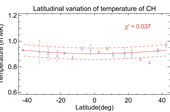 SCOPE SCOPE
SCOPE SCOPEThermal structure of solar coronal holes and their magnetic fields unveiled
A new study has accurately estimated the physical parameters of thermal and magnetic field structures of solar coronal holes which have significant influence on space weather. They found that there is no latitudinal variation of temperature structure of coronal holes, suggesting that coronal holes are likely to originate from the deep interior, and also that there is a latitudinal variation of strength of magnetic field structure of coronal holes that increases from the solar equator to the pole suggesting that coronal holes might have formed from the superposition of Alfven wave perturbations.
This is based on the paper titled "Thermal and magnetic field structure of near-equatorial coronal holes", by Hegde, M. and K.M. Hiremath, 688, A35, 2024, Astronomy & Astrophysics, 279, 7.
Press release by PIB published here.
Press release issued by DST here.
Download the paper from here.
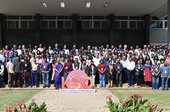 SCOPE SCOPE
SCOPE SCOPEInternational solar conference celebrates 125 years of solar physics research in India
More than 200 solar physicists from India and abroad have come together in Bengaluru this week for an international conference on “Sun, Space Weather, and Solar-Stellar Connections”. The conference is being organised by the Indian Institute of Astrophysics to commemorate the 125th anniversary of the Kodaikanal Solar Observatory and the birth of solar astrophysics in the country (conference webpage)
Download the PIB press release from here.
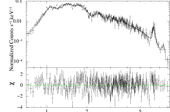 SCOPE SCOPE
SCOPE SCOPEIron lines in the X-ray detected from a binary black hole system that can help infer their properties
A study led by astronomers at the Indian Institute of Astrophysics has detected the Fe K spectral lines of ionized Iron atoms from the well-known binary Active Galactic Nucleus system 4C+37.11 using data from the Chandra Space Telescope. This is the first such detection from a binary black hole system, and they were able to conclude that this emission arises from both the accretion disk and the collisionally ionized plasma surrounding the pair of supermassive black holes in this object.
This is based on the recently published paper titled "Detection of the Fe K lines from the binary AGN in 4C+37.11", by Mondal et al, 2024, Astronomy & Astrophysics, 279, 7.
Press release by PIB published here.
Press release issued by DST here.
Download the paper from here.